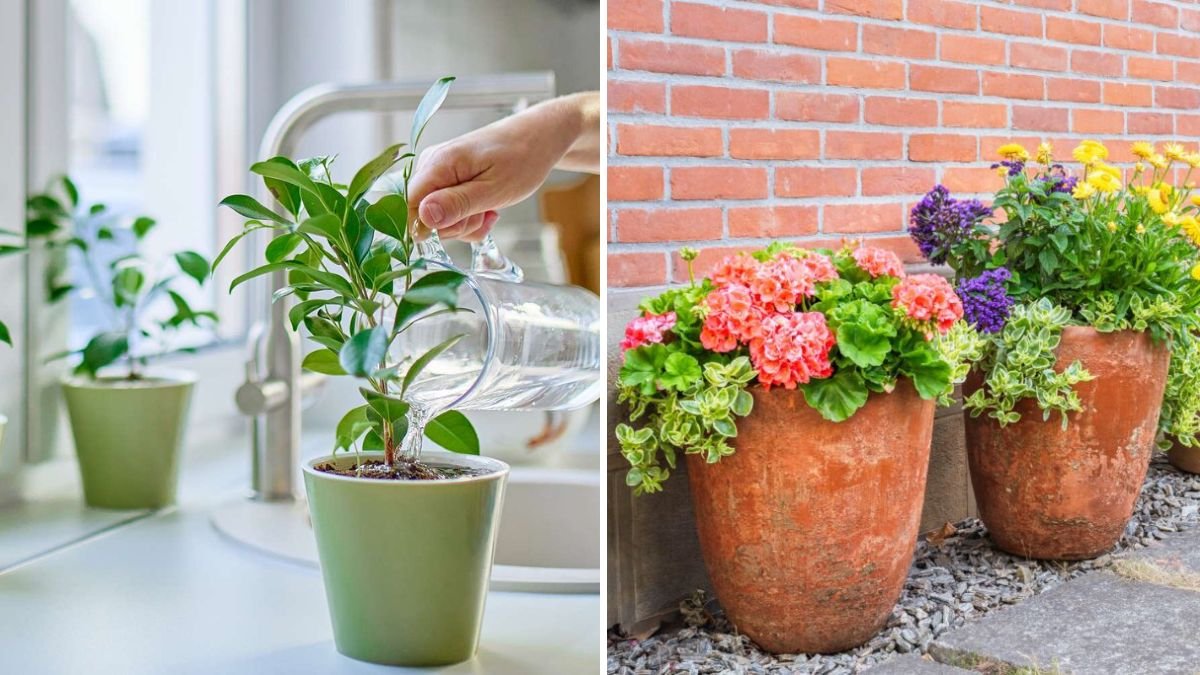Container gardening offers flexibility, portability, and accessibility for urban gardeners, balcony enthusiasts, and small-space cultivators. However, hot weather presents a unique challenge: potted plants are more susceptible to heat stress than in-ground plants. The limited soil volume in containers heats up faster, dries out quickly, and exposes roots to extreme temperature fluctuations. If left unmanaged, heat stress can stunt growth, wilt foliage, and even cause plant death.
Keeping potted plants cool in hot weather is therefore essential for maintaining plant health, growth, and aesthetic appeal. This article provides a comprehensive guide for protecting potted plants from high temperatures, focusing on plant selection, container strategies, soil management, watering, shading, and preventive care.
1. Understanding Heat Stress in Potted Plants
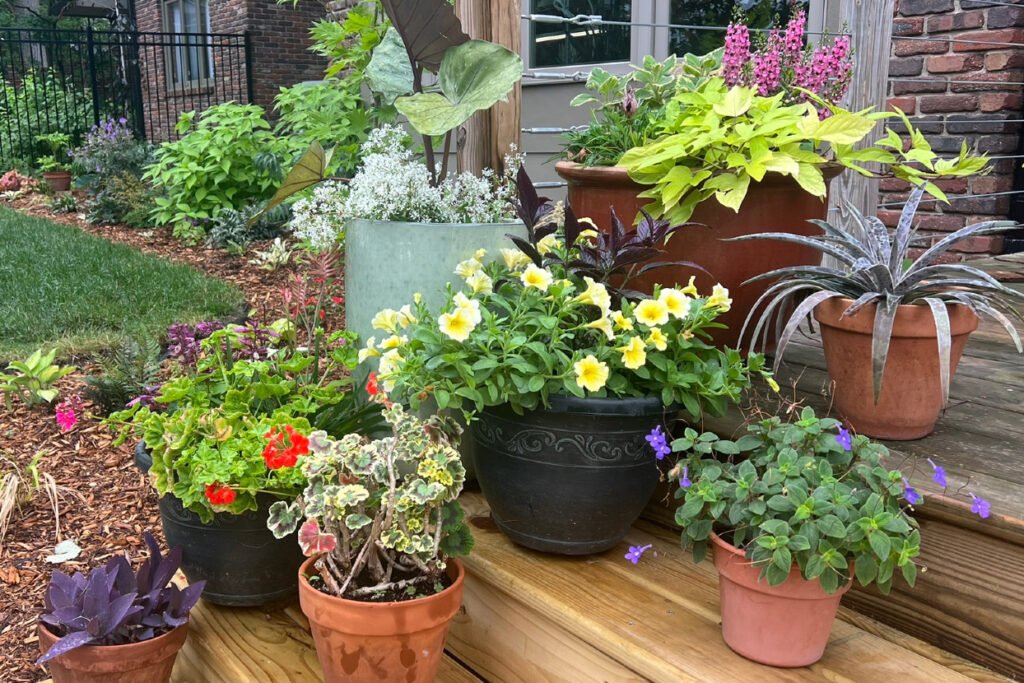
Heat stress affects potted plants differently from garden plants:
- Rapid Soil Heating: Containers, especially plastic or dark-colored pots, absorb and retain heat more quickly than ground soil.
- Limited Water Retention: Small soil volumes dry out faster, leaving roots vulnerable.
- Root Vulnerability: Excessive heat can damage root systems, reducing water and nutrient uptake.
- Leaf Damage: Foliage may scorch, curl, or drop due to dehydration and high temperatures.
Understanding these vulnerabilities helps gardeners take proactive steps to protect potted plants.
2. Choosing Heat-Tolerant Plants
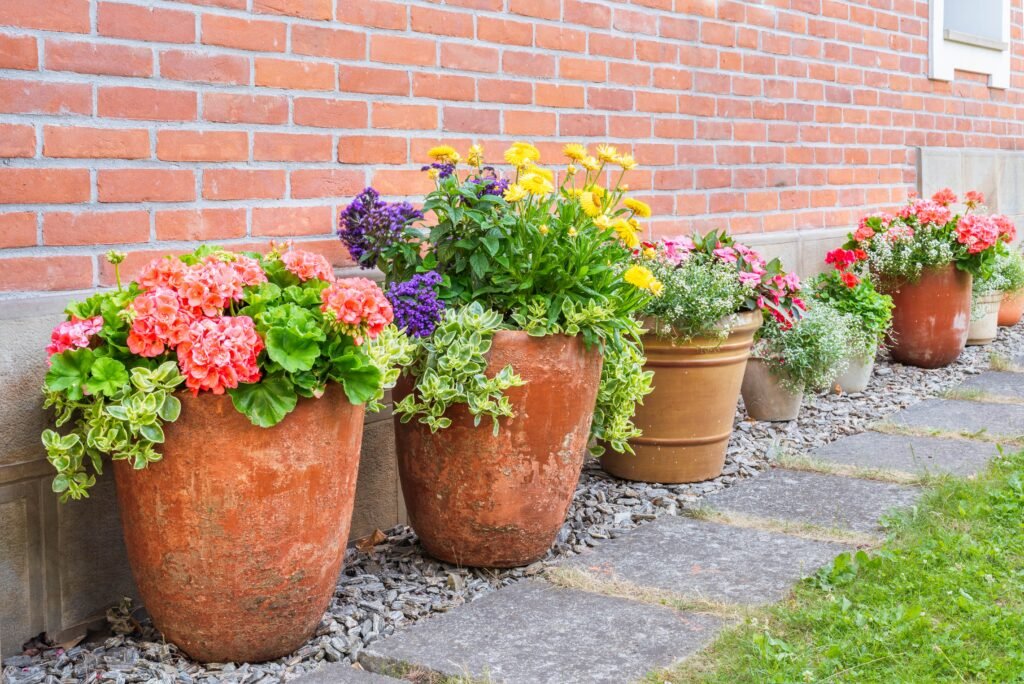
Selecting plants suited for hot weather reduces the risk of heat stress:
- Succulents and Cacti: Naturally adapted to dry, sunny conditions with water-storing leaves.
- Mediterranean Herbs: Rosemary, thyme, oregano, and lavender thrive under heat.
- Tropical Heat-Tolerant Plants: Hibiscus, bougainvillea, and marigolds handle warm climates.
- Ornamental Grasses: Provide texture and resilience in hot conditions.
- Drought-Tolerant Foliage Plants: Agave, dracaena, and snake plant tolerate high temperatures.
Choosing heat-resilient species minimizes stress and maintenance requirements.
3. Selecting the Right Containers
Container material and color play a crucial role in temperature regulation:
- Material:
- Terracotta: Breathable, but can dry out soil quickly.
- Plastic: Lightweight and retains moisture longer but may heat up faster in direct sun.
- Ceramic or Glazed Pots: Retain cooler soil longer but are heavy.
- Color: Light-colored pots reflect sunlight, reducing heat absorption. Avoid black or dark pots in full sun.
- Size: Larger containers provide more soil volume, buffering temperature fluctuations.
Proper container selection ensures stable root temperatures during hot weather.
4. Soil Management for Heat Protection
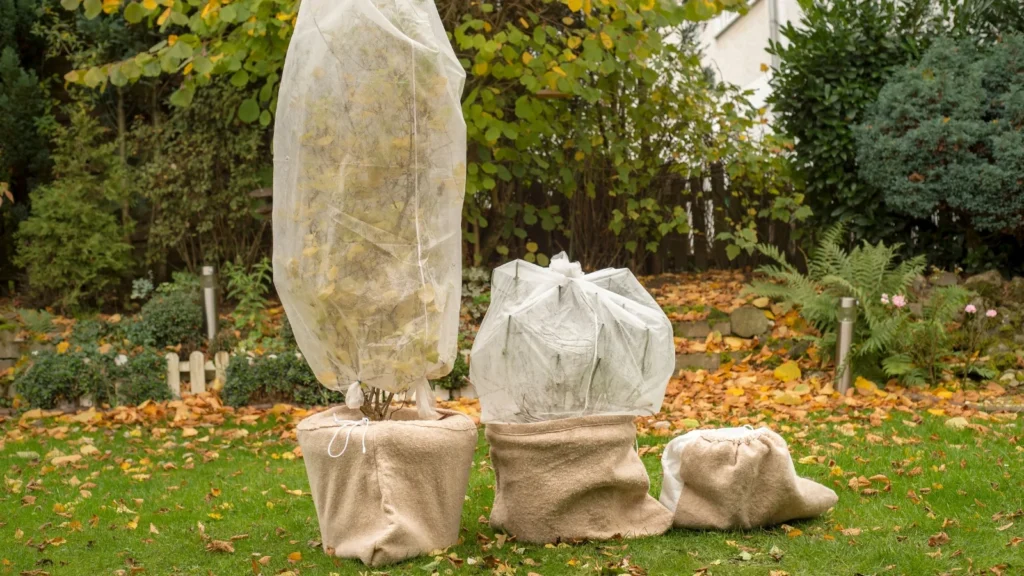
Healthy soil keeps roots cooler and retains moisture:
- Use Well-Draining Soil: Avoid waterlogged soil, which can heat up faster in the sun.
- Add Organic Matter: Compost or coco coir retains moisture and improves aeration.
- Mulching: Cover soil with organic mulch, pebbles, or bark chips to reduce evaporation and soil temperature.
- Moisture Retention: Soil additives like vermiculite or perlite enhance water-holding capacity while maintaining aeration.
Optimal soil management ensures root health and hydration in hot conditions.
5. Watering Strategies
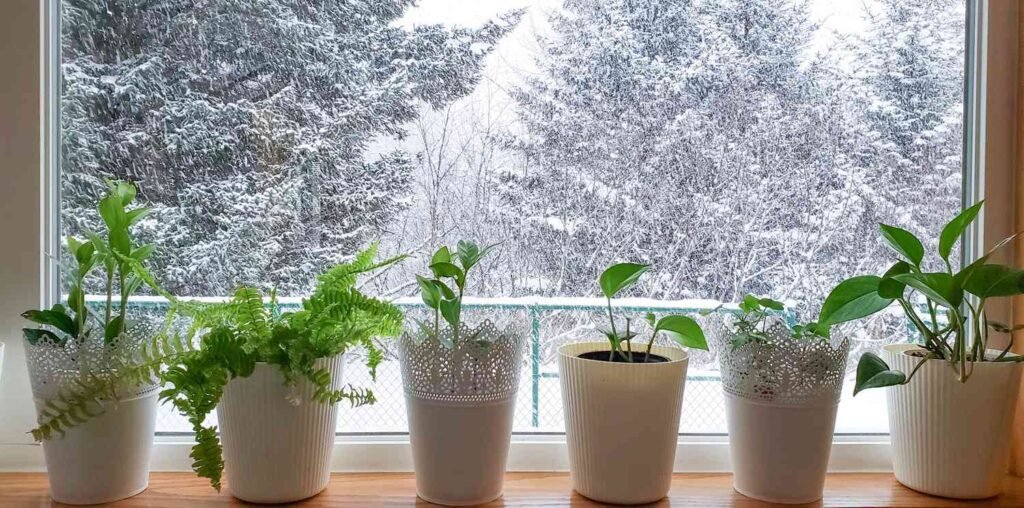
Watering is the most critical factor in cooling potted plants:
- Deep Watering: Water thoroughly to ensure the entire root zone is hydrated.
- Early Morning or Late Evening: Water during cooler hours to reduce evaporation loss.
- Avoid Shallow, Frequent Watering: Can cause surface drying and stress roots.
- Check Soil Moisture: Use your finger or a moisture meter to maintain consistent hydration.
- Self-Watering Containers: These provide a steady supply of water while protecting soil from overheating.
Proper watering keeps plants hydrated and prevents wilting during hot days.
6. Providing Shade
Shade reduces heat exposure and protects foliage:
- Temporary Shade: Use shade cloth, umbrellas, or balcony screens during peak sun hours.
- Strategic Placement: Move pots to shaded areas of the balcony, patio, or garden.
- Grouping Plants: Cluster containers to create micro-shade and retain humidity.
- Indoor Relief: During extreme heat, move sensitive plants indoors near windows with indirect light.
Shading is an effective way to reduce leaf scorch and root overheating.
7. Air Circulation and Ventilation
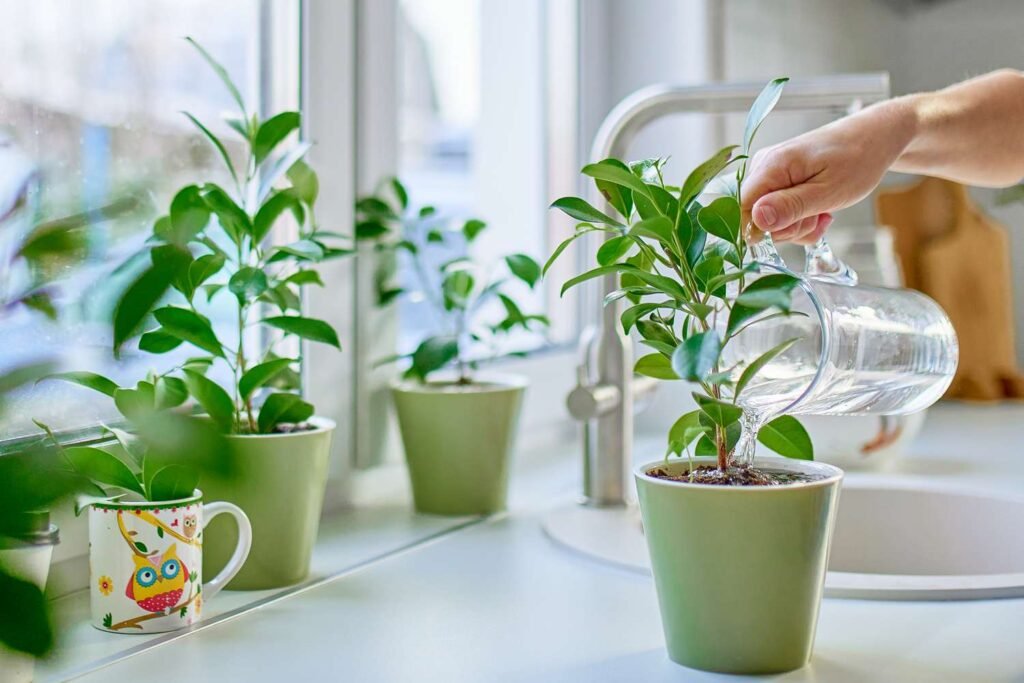
Good airflow helps prevent overheating:
- Avoid Crowding: Allow space between pots for air movement.
- Elevated Stands: Place pots on stands or shelves to improve airflow around the container.
- Fans for Indoors: Ceiling or portable fans circulate air and reduce humidity stress.
- Prune Dense Foliage: Improves airflow and prevents fungal growth in hot, humid conditions.
Air circulation supports cooler leaves and soil, reducing heat stress.
8. Using Reflective or Insulating Materials
Containers can be insulated to maintain cooler root temperatures:
- Reflective Wraps: Aluminum foil or reflective wraps around pots reduce heat absorption.
- Bubble Wrap: Insulates the pot, particularly useful for terracotta containers.
- Elevated Surfaces: Avoid direct contact with hot concrete or metal surfaces; use wooden stands or trays.
Insulating containers keeps roots cooler and moisture levels more stable.
9. Fertilization During Hot Weather
Plants under heat stress require careful nutrient management:
- Avoid High Nitrogen Fertilizers: Excess nitrogen stimulates leaf growth, which may stress plants in hot weather.
- Use Balanced or Low-Nitrogen Fertilizers: Supports plant health without overstimulating foliage.
- Organic Fertilizers: Compost tea, seaweed extract, or vermicompost provides nutrients without stressing roots.
- Timing: Apply fertilizers in early morning or evening to prevent scorching.
Balanced nutrition ensures plants remain healthy and resilient despite heat stress.
10. Repotting and Soil Refreshing
Heat-tolerant soil and healthy roots improve resilience:
- Repot Plants Annually: Refresh soil to maintain nutrient availability and moisture retention.
- Choose Larger Containers: More soil volume buffers temperature extremes.
- Check Root Health: Remove damaged or dry roots to reduce stress during hot months.
Proper pot size and fresh soil improve temperature regulation and plant vigor.
11. Companion Planting for Shade and Cooling
Companion planting can reduce stress and improve the microclimate:
- Tall Plants: Provide shade for smaller pots nearby.
- Trailing Plants: Cover soil surface, reducing evaporation and soil temperature.
- Mixed Containers: Combine plants with different heights and foliage densities to create a cooler microenvironment.
Companion planting encourages mutual protection and aesthetic diversity.
12. Signs of Heat Stress
Early identification allows timely intervention:
- Wilting or Drooping Leaves: Indicates insufficient water or high heat exposure.
- Leaf Scorch or Browning: Direct sunlight or excessive soil heat.
- Yellowing Foliage: Nutrient stress or root damage from heat.
- Stunted Growth: Prolonged heat can slow or stop growth.
Monitoring your plants ensures rapid response to prevent long-term damage.
13. Seasonal and Regional Considerations
Hot weather care depends on local climate and seasons:
- Tropical Climates: Use larger containers, thick mulch, and frequent watering.
- Dry Climates: Consider self-watering pots and heat-tolerant plant varieties.
- Temperate Zones: Protect plants during occasional heat waves; adjust watering frequency.
- Indoor Plants: Move pots away from south-facing windows during peak summer.
Adapting care practices to the environment enhances plant survival in hot weather.
Conclusion
Keeping potted plants cool in hot weather is critical for their survival, growth, and aesthetic appeal. By understanding heat stress, selecting heat-tolerant plants, using appropriate containers, preparing soil, watering effectively, providing shade, and ensuring proper airflow, gardeners can maintain lush, vibrant, and resilient container gardens even in extreme heat.
Additional strategies such as insulating pots, repotting for fresh soil, companion planting, and careful fertilization further enhance plant survival and growth. With proper care, balcony and container gardens can flourish despite high temperatures, providing greenery, beauty, and even food production in urban spaces.
A well-maintained, cool container garden not only ensures healthy plants but also improves the microclimate of your balcony or outdoor space, offering relief and visual pleasure during hot weather.
